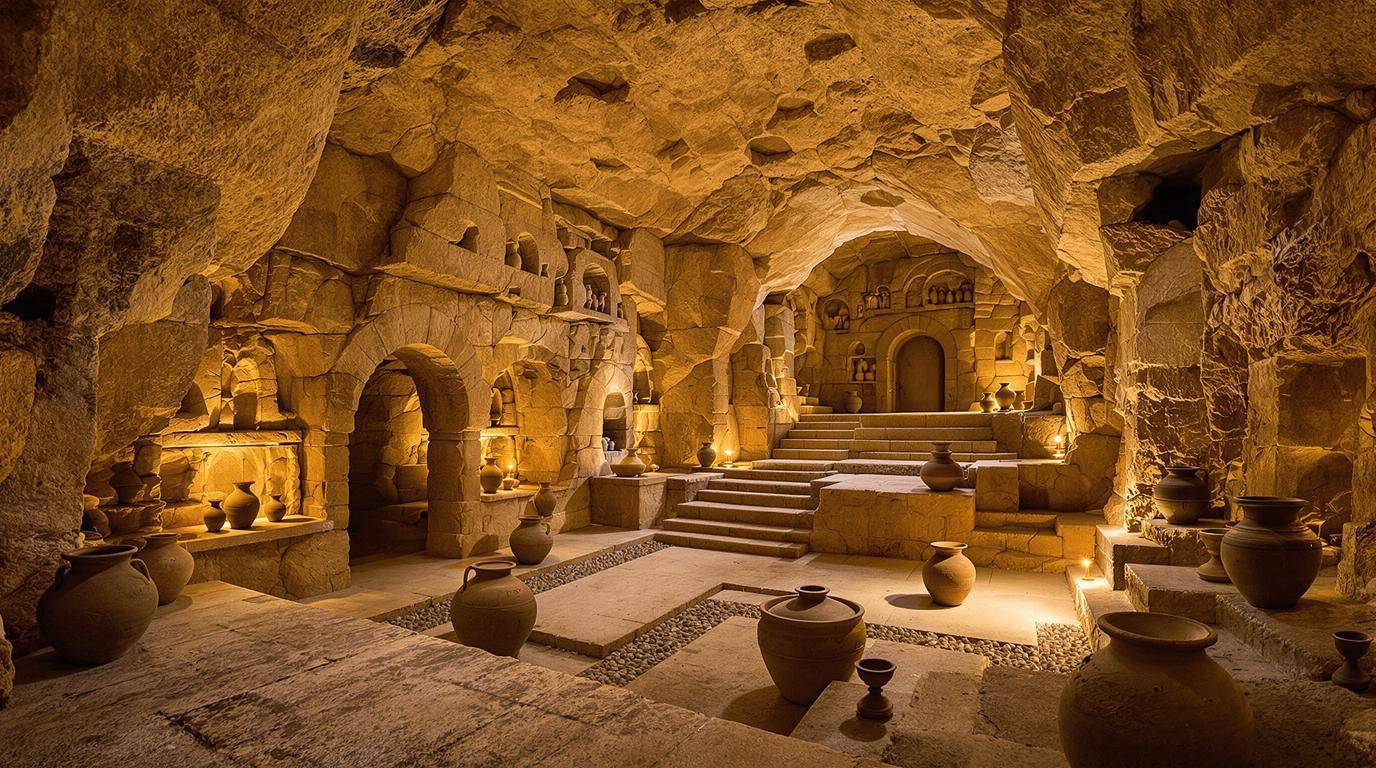The limestone walls of Jerusalem’s Old City conceal religious chambers that even most locals have never seen. Standing at 760 meters above sea level in the Judaean Mountains, this nearly one-million-resident metropolis harbors archaeological secrets that challenge everything you thought you knew about sacred ground. While Vatican crowds jostle for glimpses of religious heritage, Jerusalem’s hidden spiritual depths remain locked away from public view, protected by communities who’ve safeguarded these mysteries for millennia.
Three ancient subterranean chambers beneath the Western Wall plaza were discovered in 2020, carved into bedrock over 2,000 years ago. These underground sanctuaries contain courtyards, staircases, and ritual artifacts including clay vessels and oil lamps, yet remain sealed from tourists. The chambers’ true purpose—whether for daily activities, storage, or secret worship—continues to perplex archaeologists who study them in complete secrecy.
Unlike the commercialized religious sites that dominate travel itineraries, these hidden chambers represent Jerusalem’s most authentic spiritual heritage. The Israeli Antiquities Authority restricts access due to political sensitivities and ongoing archaeological study, creating an exclusivity that money cannot buy. What religious practices occurred in these forgotten spaces remains one of archaeology’s most guarded secrets.
The three-faith convergence locals desperately protect
Underground tunnels beneath the Temple Mount
Rabbi Yehuda Getz’s 1982 expedition into a hidden shaft near the Western Wall triggered violent clashes with Muslim worshippers, forcing authorities to permanently seal the tunnels. These mysterious passageways, rumored to connect to the Ark of the Covenant’s resting place, remain unexplored and off-limits to all visitors. The confrontation revealed how deeply communities guard access to their most sacred underground spaces, even from fellow believers.
The Ibrahimi Mosque’s divided sanctity
In nearby Hebron, just 35 kilometers south, the Tomb of the Patriarchs operates as a living example of Jerusalem’s three-faith heritage without the overwhelming tourist infrastructure. The mosque’s Jewish and Muslim sections honor Abraham through separate prayer areas, creating authentic religious experiences that Jerusalem’s commercialized sites cannot match. Local Orthodox Jewish communities provide guided access to the Machpelah Caves, offering insights into practices that remain hidden from mainstream tourism.
Hidden authenticity that defies mass tourism
Safed’s mystical study circles
The mountain city of Safed, one of Judaism’s Four Holy Cities, preserves spiritual traditions through hidden synagogues and Kabbalah study circles that operate far from tourist circuits. The Ari Ashkenazi Synagogue hosts mystical learning sessions in ancient study rooms, accessible only through local introductions. These intimate gatherings maintain living spiritual traditions that Jerusalem’s crowded Western Wall cannot replicate.
Community-led spiritual experiences
Jerusalem’s Old City conceals unpublicized yeshivas where Talmudic study sessions occur in medieval courtyards, accessible only through local networks. These authentic learning environments offer proximity to scholarly traditions that have continued uninterrupted for centuries. The contrast with Jerusalem’s tourist-heavy religious sites reveals how authentic spiritual experiences require insider access rather than purchased tickets.
Travel Note: During my exploration of Jerusalem’s hidden quarters, a local scholar revealed that the most profound spiritual experiences occur in spaces tourists never see—private study rooms, family courtyards, and underground chambers where communities maintain traditions away from commercial pressures.
The exclusive experience locals don’t want tourists to discover
Comparing authentic access across holy cities
While Jerusalem’s Western Wall attracts millions annually, Hebron’s Machpelah Caves maintain their spiritual intensity through limited tourist infrastructure and active religious practice. Safed’s mystical study rooms offer very high authenticity with minimal crowds, requiring introductions to access living Kabbalah traditions. Jerusalem’s underground chambers represent the ultimate exclusivity—completely inaccessible to all visitors.
Climate advantages for spiritual exploration
Jerusalem’s 760-meter elevation creates cooler summer temperatures than coastal cities, with July averaging 20-30°C rather than the scorching heat affecting lower elevations. This climate advantage enhances exploration of both surface sites and temperature-neutral underground chambers. The moderate mountain climate extends comfortable visiting seasons while reducing the oppressive heat that drives tourists to air-conditioned attractions.
Insider access and local secrets
Navigating restricted spiritual sites
The Temple Mount’s limited tourist access preserves its sacred atmosphere while creating genuine exclusivity that commercial sites cannot replicate. Muslim worshippers maintain control over Judaism’s most sacred space, creating complex dynamics that define authentic religious experiences throughout Jerusalem’s multi-faith landscape. These restrictions protect spiritual authenticity while limiting access to those who understand local customs and sensitivities.
Future archaeological revelations
The Western Wall’s sealed chambers may eventually open to limited public access, potentially redefining exclusive religious tourism in Jerusalem. Archaeological discoveries continue uncovering new underground spaces, suggesting that Jerusalem’s hidden spiritual heritage extends far beyond currently known sites. Monitoring these developments offers opportunities to experience archaeological revelations before they become commercialized tourist attractions.
Jerusalem’s 996,700 residents guard spiritual secrets that reveal the city’s layered religious complexity far beyond its famous surface attractions. The underground chambers, restricted tunnels, and community-led traditions represent authentic spiritual heritage that mass tourism cannot penetrate. These hidden sanctuaries preserve 5,000 years of continuous religious practice through communities determined to maintain their sacred spaces’ integrity against commercial pressures.
For travelers seeking genuine spiritual encounters, Jerusalem’s exclusive religious sites demand respect for local customs and patience with restricted access. The city’s elevated position and moderate climate create ideal conditions for exploring both revealed and hidden sacred spaces, while nearby Hebron and Safed offer alternative authentic experiences without Jerusalem’s overwhelming tourist infrastructure. The true spiritual treasures remain hidden, protected by communities who understand that sacred spaces lose their power when they become mere tourist attractions.
